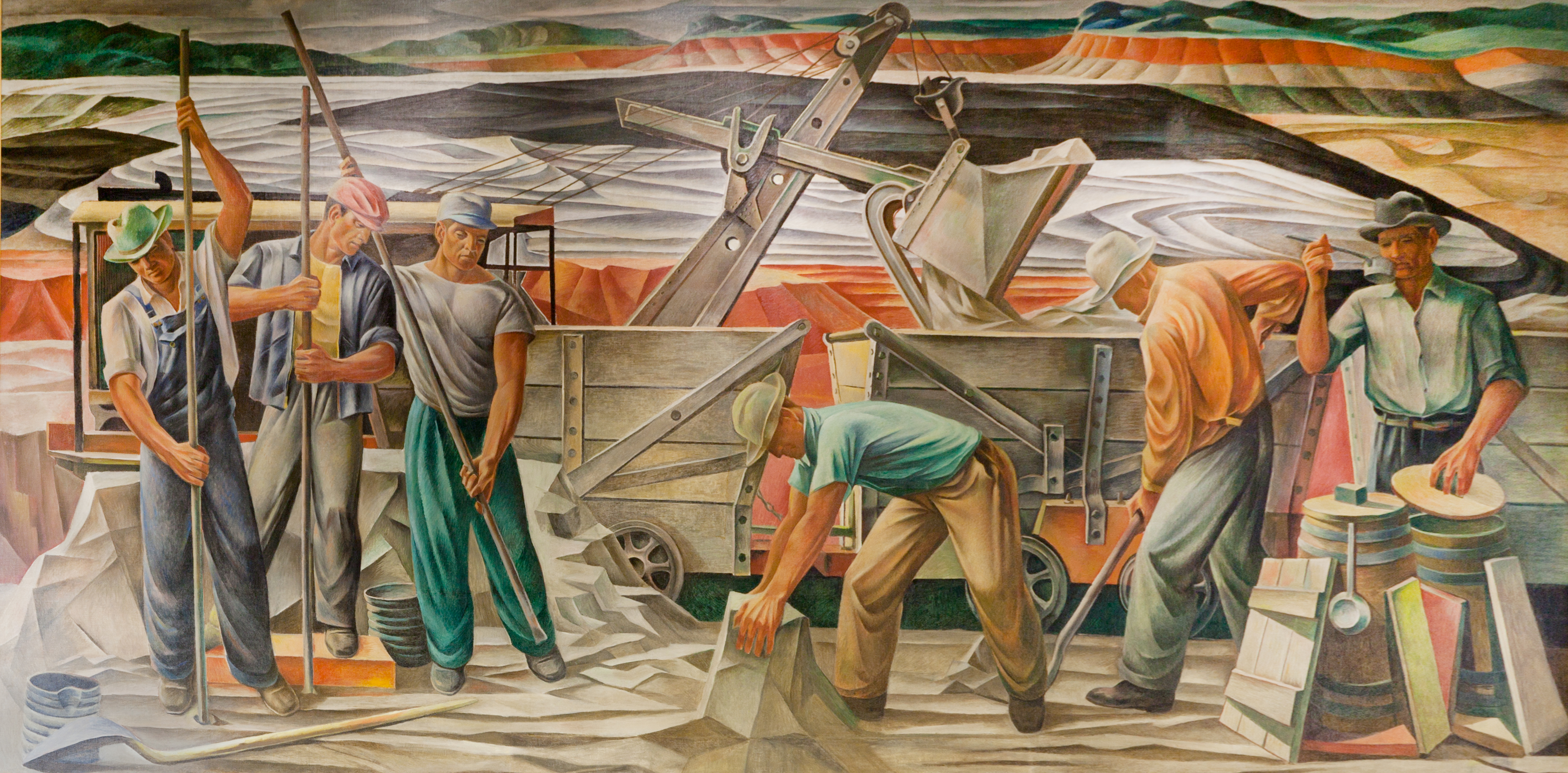Through a special wing of the Works Progress Administration (WPA), called the Federal Art Project, funded by the Emergency Relief Appropriation Act of 1935, artists and artisans created public art: Post office murals, sculptures, and theater design. In 1934, the Treasury Section of Painting and Sculpture was created in order to facilitate the creation and installation of public murals, most notably in post offices because it was commonly believed that everyone would see them there.
The project created over 200,000 pieces of public art, commissioning as many as 10,000 artists to do so. The artists were paid $23.60 a week, and the Project operated community art centers throughout the country in which they could work
A Federal Writer's Project was also established, under which writers journeyed across America, writing guidebooks and chronicling the personal histories of many Americans, many of which can be found on this Library of Congress page.
One of the most famous artists funded was Jackson Pollock. From 1938 to 1942, Pollock worked for the Federal Art Project, creating art uncharacteristic for his style, due to the Federal Art Project's emphasis on figurative, rather than abstract, art.




Interesting post! I found it extremely intriguing that the government wanted to preserve the arts due to job availability and not because of the appreciation for the arts. Just curious- did the heightened industrialism throughout the 1920s distract people from art during the Depression, or did the inventive nature of the previous decade spark more creativity through the arts? Also, I found an interesting page about art after the Great Depression. Because World War II happened soon after the 1930s, it changed a lot of the previously-established art styles. Check it out here: https://en.wikipedia.org/wiki/Art_and_World_War_II
ReplyDeleteReally good piece! I loved how it was a different point we often don't hear about in the great depression and how you uploaded many images so we could see examples of the work. I like how you structured the article and gave specific facts to aid the reader. What main styles were used in the time? Were concepts like romanticism and other art styles from the 19th century used.
ReplyDeleteThis was super interesting! I found the government's motives behind preserving the arts very fascinating. I also liked how you added a lot of images so that your readers could see the general styles of these painting in the 1920s. Out of curiosity, was there a certain style that came out of this decade or one that especially flourished?
ReplyDeleteThis was super interesting! I found the government's motives behind preserving the arts very fascinating. I also liked how you added a lot of images so that your readers could see the general styles of these painting in the 1920s. Out of curiosity, was there a certain style that came out of this decade or one that especially flourished?
ReplyDelete